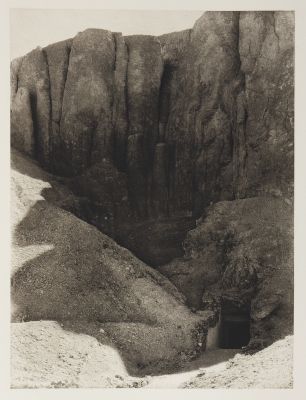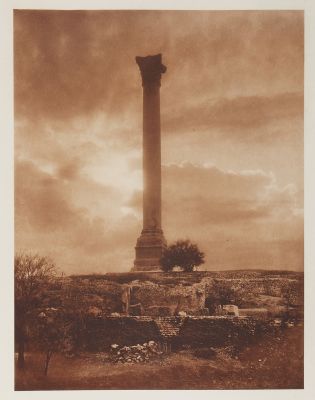
Title
Entree D’un Tombean dans la Vallee des RoisArtist
Boissonnas, Fred (Swiss, 1858-1946)Publication
ÉgypteDate
1932Process
PhotogravureAtelier
Leblanch et Trautmann of ParisImage Size
30 x 22 cm
The Swiss photographer Frédéric (Fred) Boissonnas was invited to Egypt in 1929 by King Fuad I to gather photographic material for a major book commission, the lavish book Égypte [Egypt], published in Geneva in 1932. Traveling with his compatriot publisher and author Paul Trembley, he toured the country for eleven months creating images that referenced Egypt’s long history as well as its identity as a newly-founded state.
Boissonnas traversed what was once ancient Egypt with his large format camera; he photographed the landscape, the people and the architecture. Although we see the ruins of Pharaonic times and the progression of the architecture of Graeco-Roman, Coptic-Byzantine, Muslim, and modern, his photographs convey the impression that very little has changed in the structures and the lives of the people who inhabit them. We see veiled women in the streets, men at prayer, oxen in the field, and statues larger than life – all are bathed in strong light or hidden in the deep shadows. The choice of hand-pulled photogravure makes this certainly one of the finest of twentieth century photographic books of travel, and by far, the most fully realized of Boissonnas’ three major works.
References
Nicolas Bouvier. Boissonnas a Dynasty of Photographers 1864-1983. Lausanne 1983.







